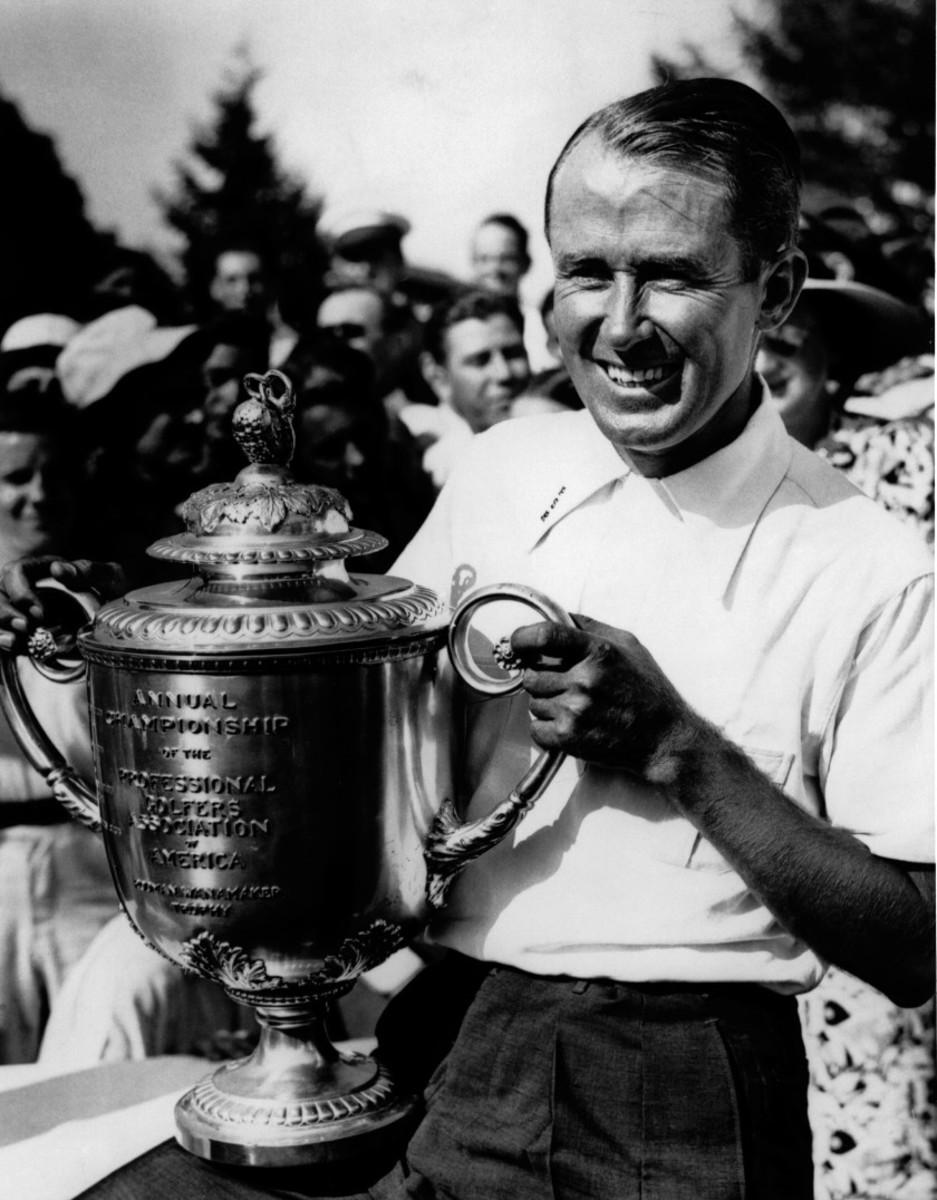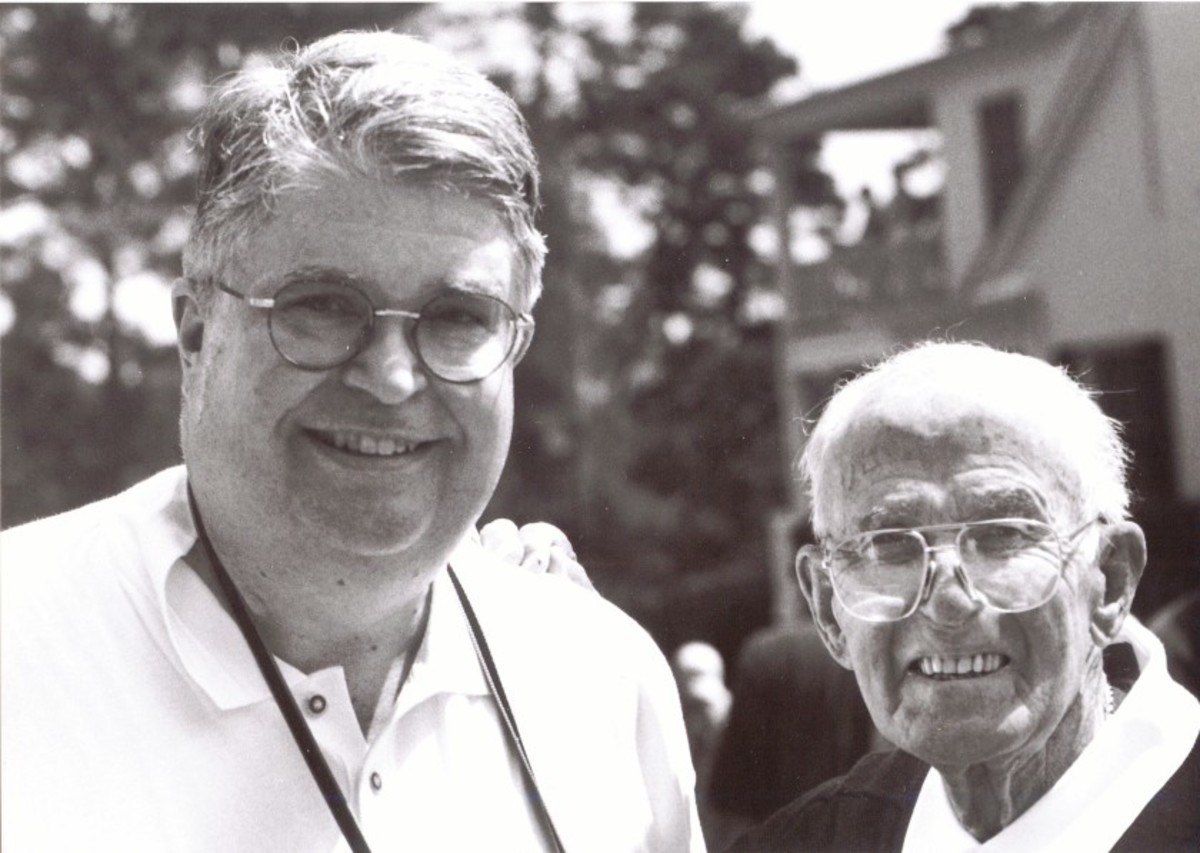In match play, it’s anybody’s game as Paul Runyan stuns Sam Snead

This week, before the coronavirus pandemic suspended professional golf, the WGC Match Play would have been held in Austin, Texas. The tournament, one of the original World Golf Championships events established in 1999, underscores a dramatic shift in format during the past 60 or so years on the PGA Tour: It’s the only match-play event scheduled annually on the game’s top pro tour.
Consider that at golf’s dawn in the early 19th century, there was no course par and no stroke play. Golf was contested at match play.
The hole-by-hole format remains popular among recreational golfers today, and many top amateur events, such as the U.S. Amateur, use the format – often after stroke-play qualifiers – to decide the champion.

In the past, professional golf spotlighted several match-play tournaments, including the PGA Championship, which switched to stroke play in 1958.
It is said that 72 holes of stroke play determines the best golfer, and match play determines the best competitor. It is true, however, especially in an 18-hole match, that a lesser player can ride a hot streak and knock out a top player. That’s a little harder to do in a 36-hole match, such as with many of the USGA’s championship finals.
But the last thing that a tournament sponsor or a TV broadcaster wants is for the tournament favorite to be knocked out in the first round. That is what happened in the 1929 U.S. Amateur at Pebble Beach, when two-time defending champion Bobby Jones was defeated in the first round by a then-unknown Johnny Goodman. Theatergoers don’t want the hero to be killed in the first act of the play, which is the equivalent to what happened to Jones.
And with live TV coverage, a lopsided victory in a match would leave a lot of scheduled air time to be filled.
But match-play tournaments can provide plenty of excitement and produce the unexpected. Consider the 1938 PGA Championship, played at the A.W. Tillinghast-designed Shawnee Country Club in Shawnee-on-Delaware, Pa.
The format for the 1938 PGA was rigorous: 12 rounds of golf, or 216 holes, over seven days. There were 36 holes of qualifying, with 64 players advancing to match play out of the 107 who entered. It was followed by two 18-hole matches on the first day, a 36-hole match on the second day, and the quarterfinals, semifinals and final, all at 36 holes, if needed.
In the 1938 PGA, two of the era’s star players, Paul Runyan and, Sam Snead, met in the final for the Wanamaker Trophy. Snead was the oddsmakers’ 10-1 favorite to win the match. He was tall, strong and with a model swing drove the ball among the longest hitters on the professional tour. The slightly built Runyan – about 5 feet 7 inches and 130 pounds – used an unorthodox loopy swing as one of the game’s shortest hitters.
Runyan, who was raised in rural Arkansas, was introduced to golf as a caddie. He quit school after the eighth grade, and at age 18 became the head professional at Concordia Country Club in Little Rock.
“I recognized early on that I had to be good at the short game or I wasn’t going to go anywhere,” Runyan said. “All my playing career I was made fun of for my small size and being a short hitter. And I lived with being an unorthodox player…. I swayed way back behind the ball intentionally and lunged past it to get more leverage.”
When not competing in tournaments, Runyan put in three hours every day practicing his putting and short game. In 1933, Runyan won nine tournaments. In 1934, he was the leading money winner on tour and also won the PGA Championship at Park Country Club near Buffalo, N.Y., defeating Craig Wood, for whom he had once worked as an assistant, 1 up, at the 38th hole.
Around this time, Runyan picked up the nickname “Little Poison,” the same moniker as Pittsburgh Pirates outfielder Lloyd Waner because of their similar physical statures and their ability to “kill” their opponents. Runyan also was called “Little Lord Chesterfield” for his dapper attire — cashmere sweaters, shirts with French cuffs and fancy cuff links, coordinated colors – and impeccable manners.
Snead, four years younger than Runyan, excelled at sports in high school, playing football, basketball and baseball. Snead started caddieing at age 7 and became enamored with the game. He turned pro in 1934 and hired a manager, Fred Corcoran, who built up Snead as a hillbilly out of the Back Creek Mountains of southwestern Virginia who never had a lesson. Part of that might have been true, but Snead practiced a lot, worked on his hand position at the top of his backswing and learned how to maneuver the golf ball. By the time of the 1938 PGA, Snead had won eight tournaments on tour and finished second in the 1937 U.S. Open.
Snead described his swing, explaining, “I try to feel oily…. When I swing at a golf ball right, my mind is blank and my body is as loose as a goose.” Snead said he worked on keeping the clubhead as far from his body as he could when he was swinging.
Because of his length off the tee, Snead was known as “The Slammer” or “Slammin’ Sammy.”
It was thought that over a 36-hole final, Snead would wear down Runyan. Instead, it was the opposite; Runyan’s short game wore down Snead.
Off the tee, Snead outdrove Runyan by 30-65 yards. Being farther away from the green, Runyan would hit his shot to the green first at the par 4s. Snead would get to the green, only to find Runyan’s ball closer to the pin. Snead began pressing and was missing greens.
Billy Burke, the 1931 U.S. Open champion, watched Runyan line up a 7-foot putt and said, “He missed one of those 20 years ago — practicing,” a humorous line which summed up what Runyan was doing to his opponent.
At the end of the first 18 holes, Snead had returned a score of even-par 72 and found himself 5 down. After lunch, Runyan bogeyed the sixth hole of the second round, allowing Snead to win his first hole of the match. On the next hole, Runyan bobbled around, leaving himself a 32-foot putt for par. Snead had a short putt for par and looked to be picking up another hole. However, Runyan quietly drained the long par putt to halve the hole. Any wind left in Snead’s sails dropped away.
Runyan finished off Snead with a record-setting 8-and-7 rout.
Runyan made only one bogey in the match, and that was the only hole he lost. Runyan was 3 under par for the last 11 holes of the match, and he was 8 under for the match. Runyan birdied every par 5 except one; Snead birdied none of them. Runyan said that after the first nine holes, he was 2 under par and knew he had Snead beat.
Runyan also had a secret weapon: the weather. It had been sweltering the entire week, with temperatures around 100 degrees and 90-percent humidity. Before breakfast each day, Runyan took a cold bath; before lunch, he took another cold bath. Runyan said the routine made him feel stronger as the week went on while the others in the field wilted.
After the match, referring to Runyan’s play, Snead said, “This isn’t golf; it’s magic,” adding, “Runyan left me so bothered that after a while, I couldn’t have sunk a putt in a bathtub.”
Runyan, who could be a bit cocky at times, was the consummate gentleman afterwards, saying Snead was just off his game and gave Runyan the chance to win. However, Runyan would have been tough to beat on any day.
Snead would go on to win three PGA Championships at match play. He was a dominant player, with 82 recognized victories – a mark since equaled by Tiger Woods – although Snead posted many more unofficial victories not acknowledged by the PGA Tour. Generations later, his swing continues to draw admiration from golfers of all levels.
Runyan continued to play top tournament golf, amassing 29 PGA Tour titles and a spot in the World Golf Hall of Fame, but he became better known as a short-game teacher. He espoused a putting stroke that eliminated the wrists, with a shoulder-rocking pendulum motion used by many professionals today. Runyan also taught a wristless chipping method, using a long iron with the heel of the club raised.

Runyan played in several Masters Tournaments, almost winning the inaugural 1934 edition, and posted four top 10s up to 1942. He played the Masters infrequently after World War II because of club jobs in the West.
In 2000, at age 91 and two years before his death, Runyan returned to Augusta to play in the Wednesday Par 3 Contest and was greeted with thunderous applause when introduced as the man who beat Sam Snead, 8 and 7. On the ninth hole, Runyan hit a 5-wood, and his ball soared in a high arc over Ike’s Pond, landing softly on the green and prompting a full-fledged “Augusta roar” from the crowd.
Runyan was visibly moved. “I can’t believe they remembered me,” he said.
Of course, they did. And so, too, will the rest of us for his match-play prowess.
Sign up to receive the Morning Read newsletter, along with Where To Golf Next and The Equipment Insider.
